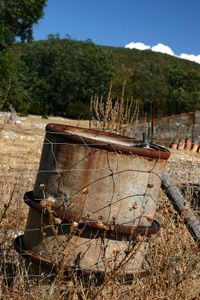Replacing Oil
When filling the engine back up with clean oil, check your vehicle's owner's manual or reference a service manual at your local automotive maintenance shop for the type of oil that's recommended and how much you should use. Typically, most engines take between 4 and 6 quarts.
Use a funnel to channel the oil to keep it from spilling out onto the engine. Oil that spills onto the engine could heat up, causing a fire that requires additional vehicle maintenance later. Once you've added the correct amount of oil, lower the car off of the ramps or car jacks. It may take a few minutes for the oil to reach the bottom of the pan because it's cold and moves slower than hot oil. The oil level should be just below the "full" mark on your dipstick. For reference, the amount of oil between the "add" and the "full" readings is 1 quart.
Advertisement
It's extremely important that you don't add too much oil to your vehicle. When too much oil has been added, the crankshaft can come into contact with the oil. The crankshaft spins at several thousand revolutions per minute and can whip the oil into froth. If this happens, the oil pump will be unable to pump the oil into the areas of the engine that need lubrication. This can cause serious problems to your engine and will bring you additional car maintenance repairs.
Once you've determined that you have the correct amount of oil added to your engine, turn the car on and run it for about five minutes to allow the oil to circulate. Once you've done this, check for any oil leaks before you clean up. Remember, used oil is considered a hazardous material and must be disposed of properly. Many recycling centers, gas stations and auto maintenance shops will take used oil and oil filters. Some websites, like Earth911.com, will help you locate a depository in your area.
So how often you should change your oil? Keep reading to find out.
